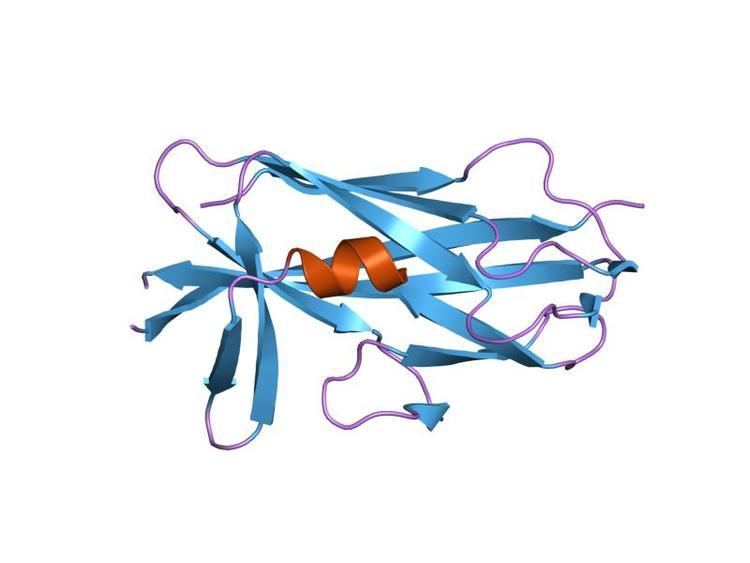Symbol Saf-Nte_pilin InterPro IPR018569 PDB RCSB PDB; PDBe; PDBj | Pfam PF09460 Pfam structures PDBsum structure summary | |
 | ||
In molecular biology, the protein domain, Saf pilin N-terminal extension refers to a domain only found in bacteria, more specifically, in gram-negative bacteria. Pili need to be formed by bacteria, as they are a method of adhering to the host organism which helps them infect the host cell. In other words, they are the bacteria's virulence factor. This particular protein domain helps the pili to form, via a complex mechanism named the chaperone/usher pathway. This protein domain is highly important for such bacteria, as without pili formation, they could not infect the host.
Contents
Function
This protein domain, has an important function in forming pili. These are virulence factors crucial for cell adhesion to the host and biofilm formation which successful infection.
Structure
This protein domain consists of the adjacent Saf-Nte and Saf-pilin chains of the pilus-forming complex. They are Chaperone/usher (CU) pili, and have an N-terminal extension (Nte) of around 10-20 amino acids. Salmonella Saf pili, which are assembled by FGl chaperones. The structure has been well conserved, as they contain a set of alternating hydrophobic residues that form an essential part of the subunit–subunit interaction.
Mechanism
The mechanism for the assembly reaction is termed donor strand exchange DSE which Pilus assembly in Gram-negative bacteria involves a Donor-strand exchange mechanism between the C- and the N-termini of this domain. The C-terminal subunit forms an incomplete Ig-fold which is then complemented by the 10-18 residue N terminus of another.
The N terminus sequences contain a motif of alternating hydrophobic residues that occupy the P2 to P5 binding pockets in the groove of the first pilus subunit.
